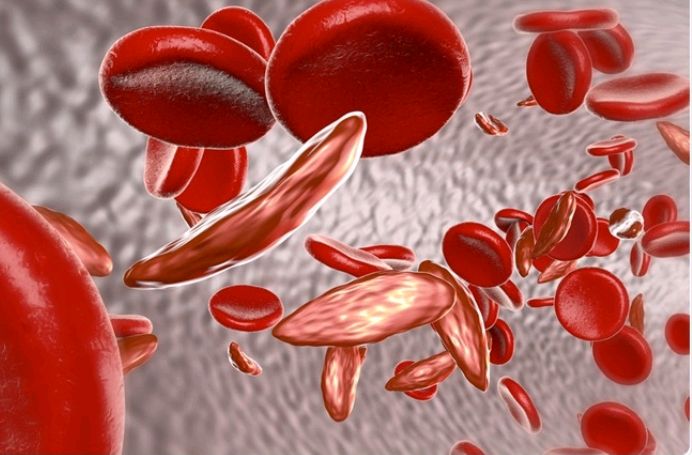Sickle Cell Disease and Sickle Cell Anemia
Sickle cell disease is caused by a faulty gene that affects how red blood cells develop. Sickle cell anemia is a form of anemia which is inherited. With sickle cell anemia, there aren’t enough healthy red blood cells to carry adequate oxygen throughout your body, depriving the body tissues of the oxygen and nutrients they need to function. This causes severe pain.
Normal red blood cells are flexible, round, and they move easily through your blood vessels. In sickle cell disease, the red blood cells become rigid and are shaped like sickles or crescent moons. Making them easily get stuck in small blood vessels, which can slow or block blood flow and oxygen to the affected parts of the body.
Also, red blood cells usually live for about 120 days before they die and need to be replaced. But sickle red blood cells die after an average of 20 days. This results in a shortage of red blood cells (anemia). Without enough red blood cells in circulation, your body can’t get the oxygen it needs to feel energized.
Sickle cell disease is a serious and lifelong condition, although long-term treatment can help manage many of the problems associated with it. There’s no cure for sickle cell disease. However, treatments can relieve pain and help prevent further problems associated with sickle cell anemia.
Signs and symptoms
* Anemia. .
* Severe episodes of pain
* Hand-foot syndrome. Swollen hands and feet may be the first signs of sickle cell anemia in babies. The swelling is caused by sickle-shaped red blood cells blocking blood flow out of their hands and feet.
* Frequent infections as a result of damaged spleen by the sickle cells.
* Delayed growth as a result of inadequate red blood cells.
* Vision problems. Tiny blood vessels that supply your eyes may be occluded with sickle cells. This can damage the retina, which’s the part of the eye that processes visual images.
* Severe chest pain
* Jaundice
* Priapism
* Fatigue
* Difficulty breathing
Causes
The sickle cell gene is passed from generation to generation in a pattern of inheritance called autosomal recessive inheritance. If both parents have this faulty gene, there’s a 25% chance of each child being born with sickle cell disease. This means that both the mother and the father must pass on the defective form of the gene for a child to be affected.
If only one parent passes the sickle cell gene to the child, that child will have the sickle cell trait. With one normal hemoglobin gene and one defective form of the gene, people with the sickle cell trait make both normal hemoglobin and sickle cell hemoglobin. Their blood may contain some sickle cells, but they generally don’t experience symptoms. However, they are carriers of the disease, which means they can pass the defective gene on to their children.
Risk Factors
The risk of inheriting sickle cell disease comes down to genetics. For a baby to be born with sickle cell anemia, both parents must carry a sickle cell gene.
Prevention
The only prevention is a pre-marital screening for sickle cell and your doctor will review the results and advise both of you on what to do.
